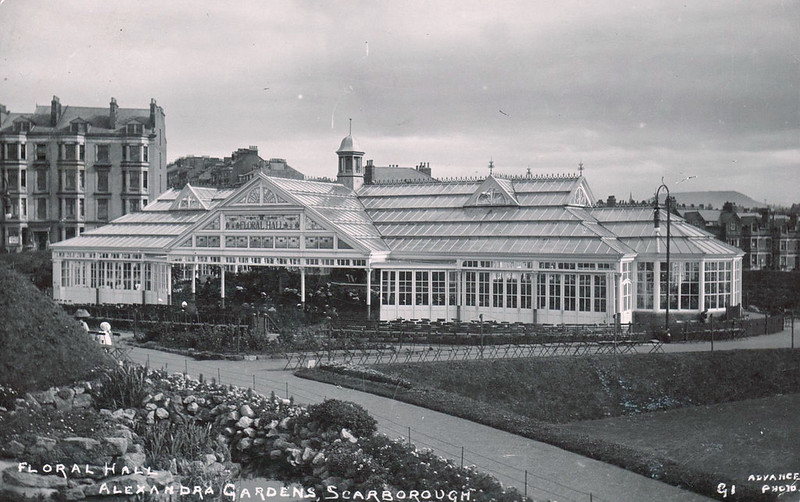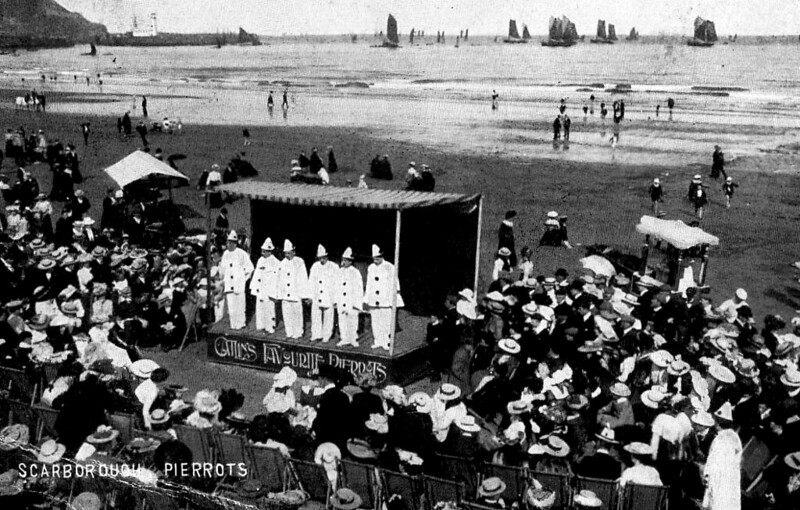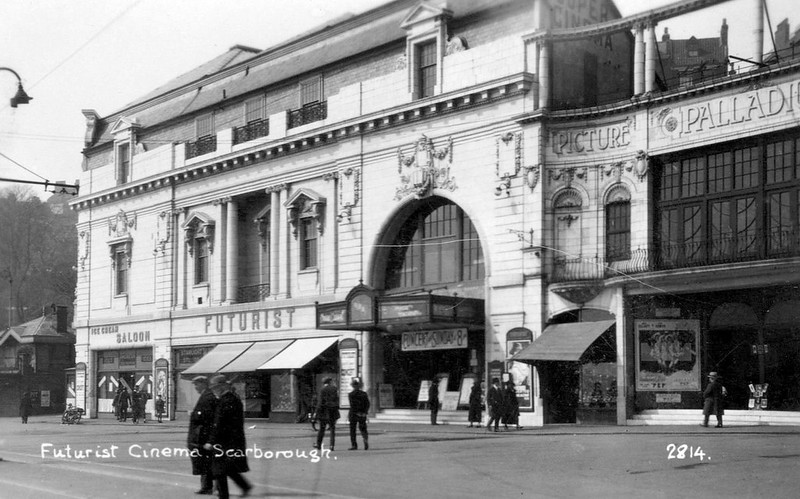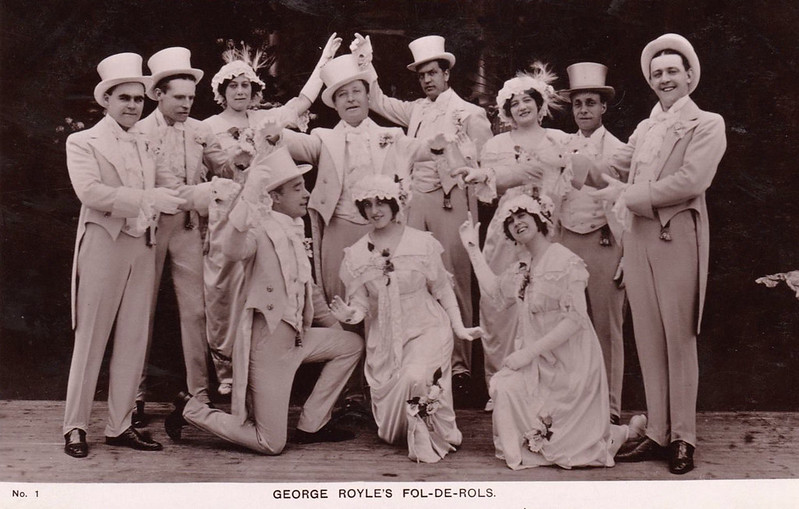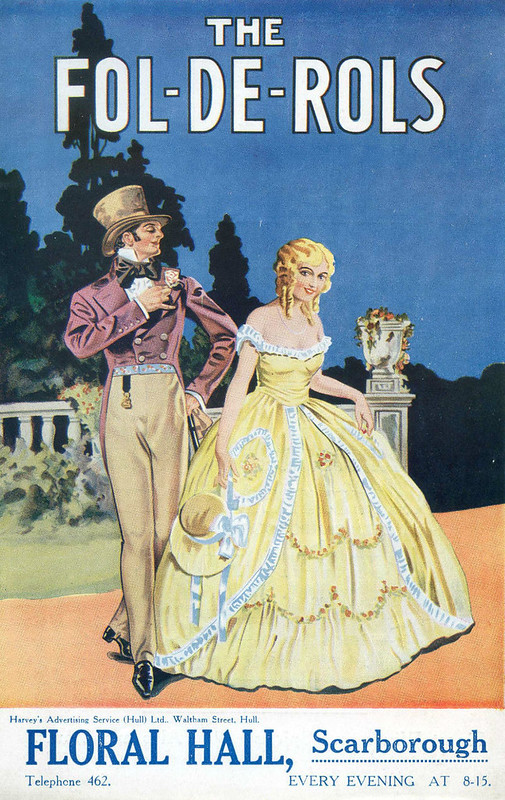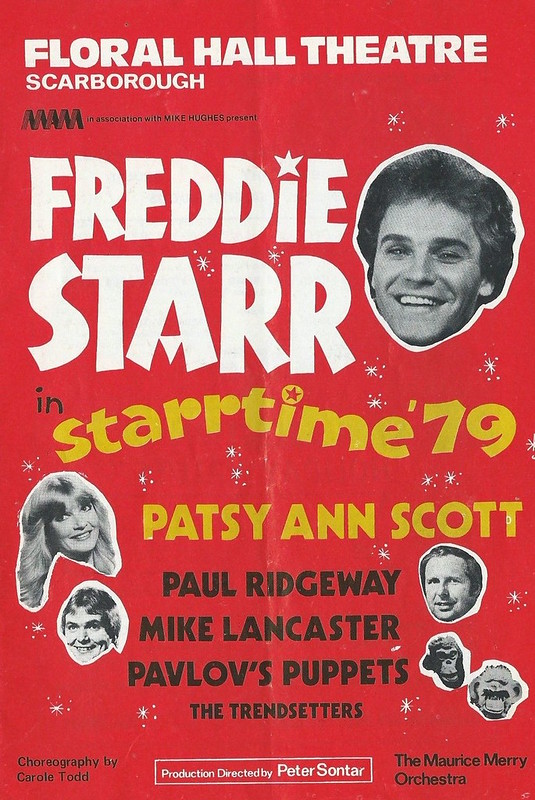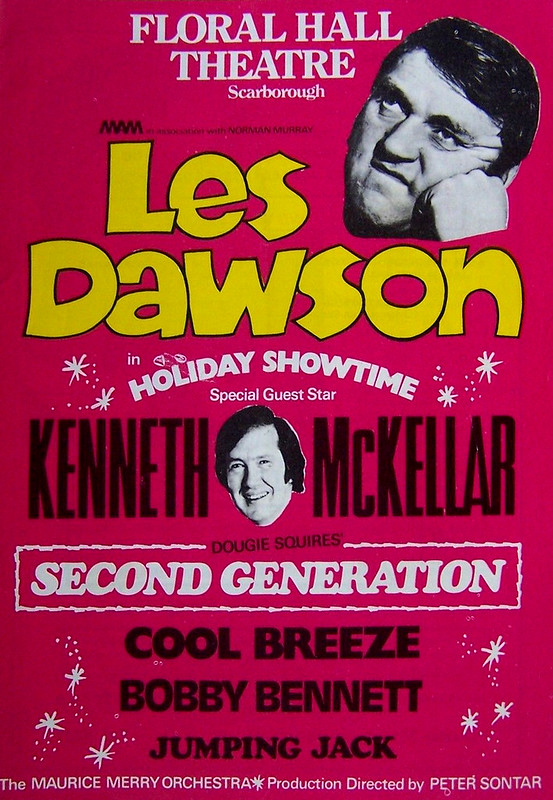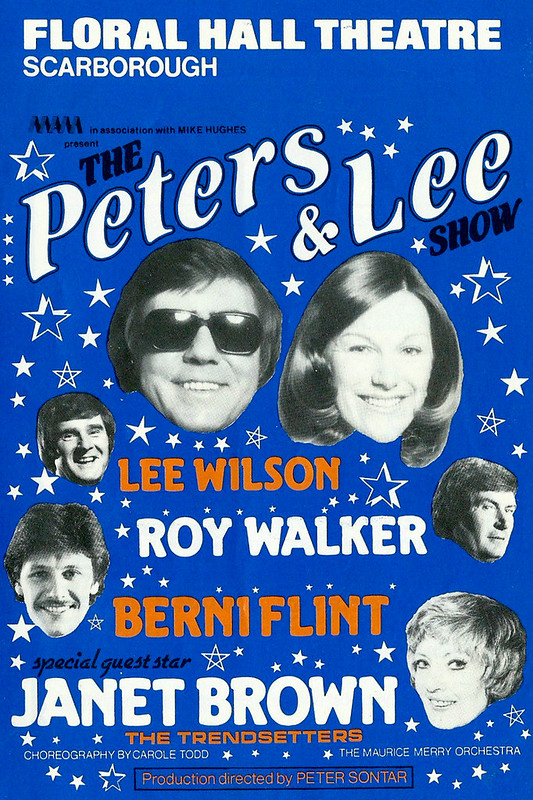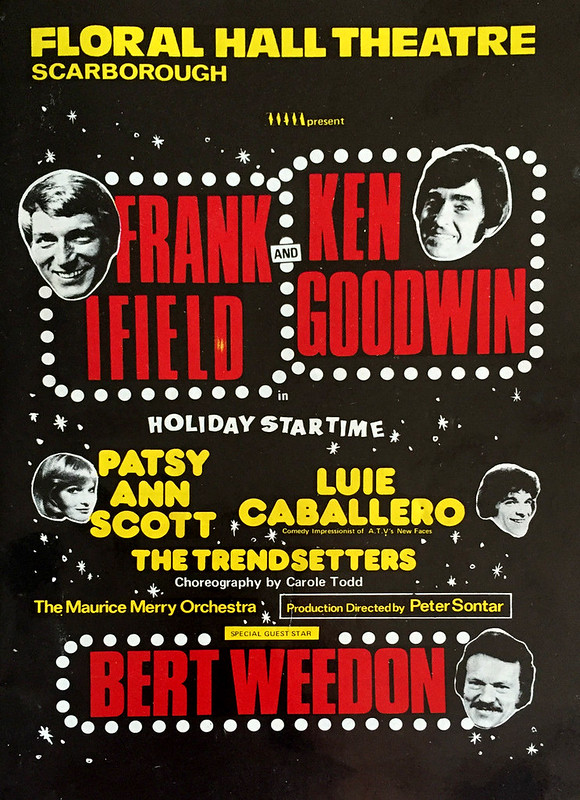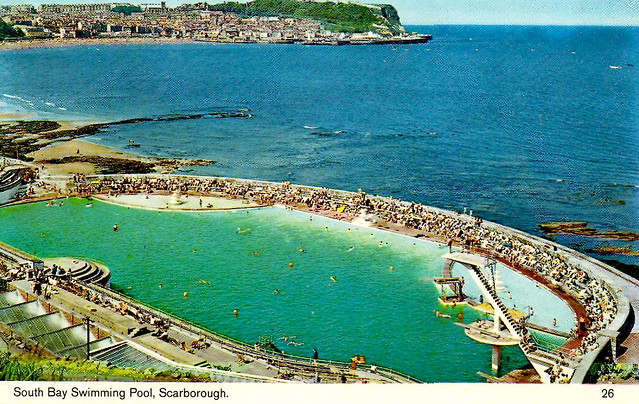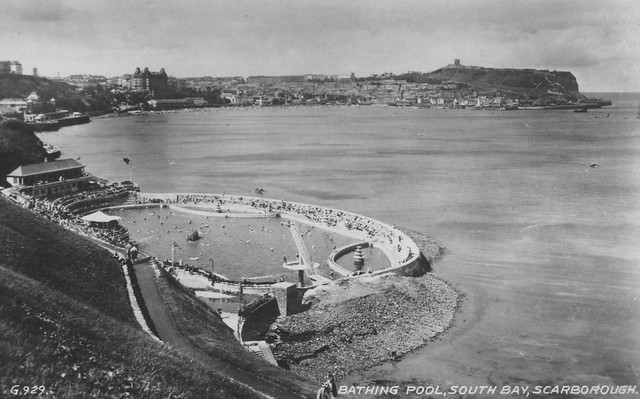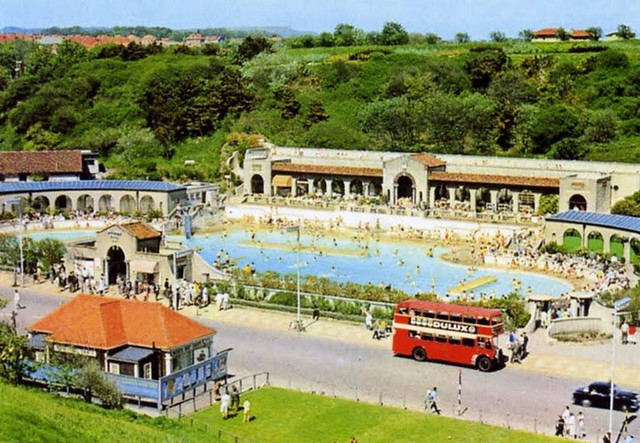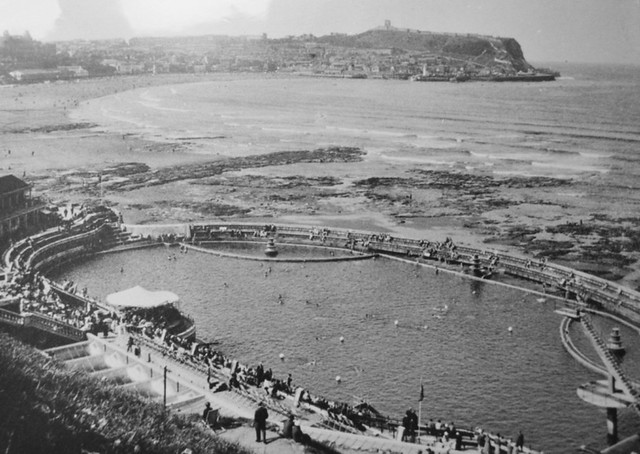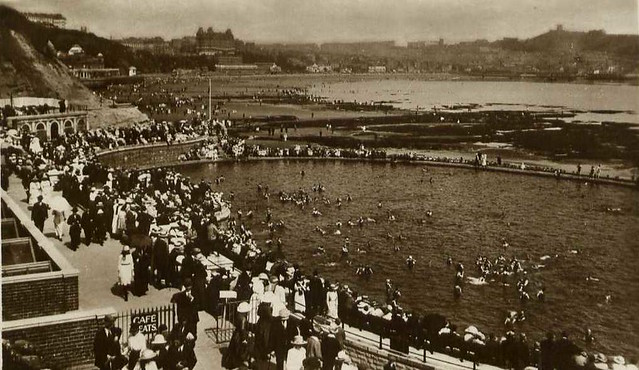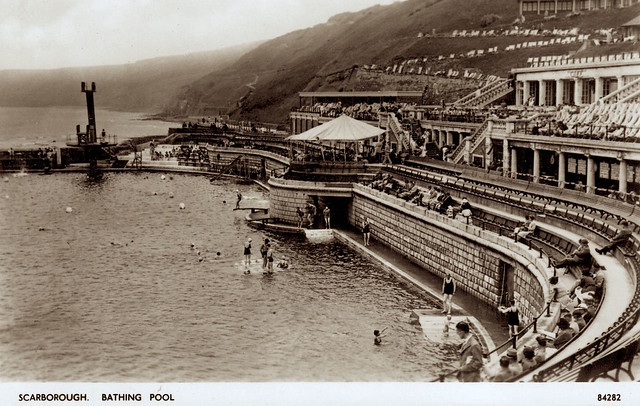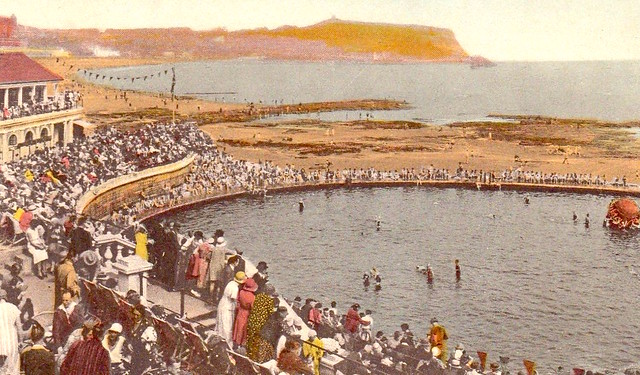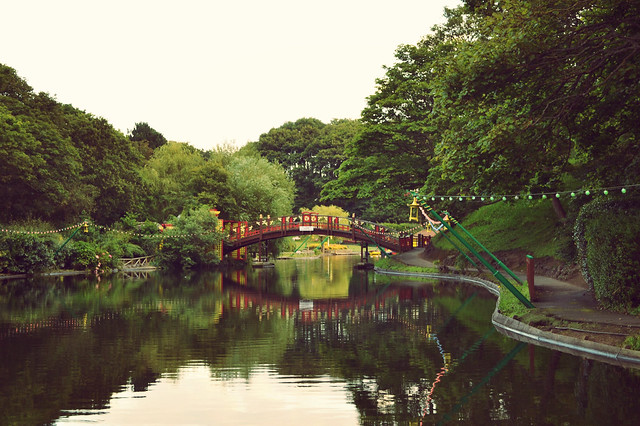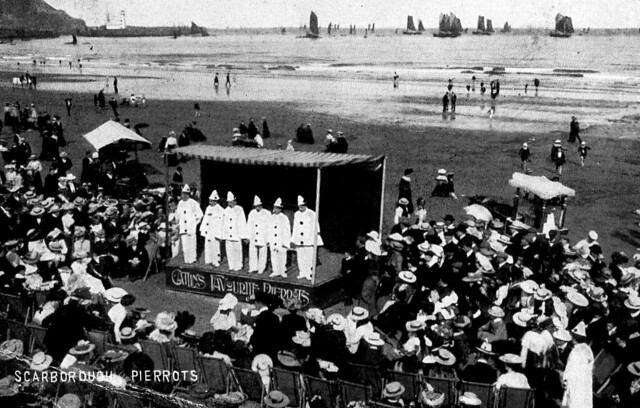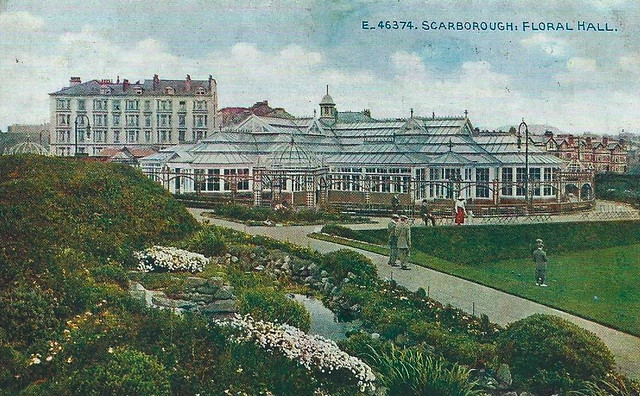Aside from Peasholm Park, Northstead Manor Gardens and Alexandra Gardens, which have already been covered here, Scarborough has, over the years, boasted numerous splendid gardens. In this post you can enjoy a visual feast of some of the others, whose histories will be covered in more depth soon.
Clarence Gardens
In the nineteenth century, Britain was still coming to terms with the effects of rapid industrialisation, and problems associated with urban growth led public officials across the country to develop public parks. Such places offered respite from gruelling city life, as well as fresh air, flowers and trees. Scarborough was no different, and in the 1800s and early 1900s, a plethora of parks and gardens appeared, including Clarence Gardens.
Above: Clarence Gardens (source)
Clarence Gardens was located on the North Bay, overlooking the doomed North Bay Pier. It was laid out by Leonard Thompson, Superintendant of Scarborough Cemetery (1865 – 1911) and opened in 1896 alongside the Royal Albert Drive.
Above: View of the gardens and Royal Albert Drive, plus the remains of the pier, in approximately 1905 (source)
The gardens featured a bandstand and a stage, winding walkways across the cliffs and even a small bridge.
Above: Performers entertain a small audience (source)
Although the bandstand, much of the seating and the live entertainment are now long gone, the winding pathways remain, and the nearby Clarence Gardens Hotel, keeps the name alive.
Italian Gardens
Above: The Italian Gardens Lily Pond (source)
The Italian Gardens were yet another creation of Scarborough’s legendary Borough Engineer, Harry W. Smith. During his tenure he set about transforming areas of wasteland into beauty spots for tourists and locals, and his successes include Peasholm Park, Alexandra Gardens and the South Bay Pool.
Above: The statue of Mercury (source)
The centrepiece of the gardens is a lily pond surrounding a pedestal which sports a statue of Mercury – Roman god of financial gain, poetry, communication, and travel, amongst other things. Since 2000 a resin cast has replaced the original statue, but before it was constructed, Smith had one of his staff pose on the pedestal to check positioning and measurements.
Above: Edwardian visitors at the gardens (source)
Two raised platforms at each end of the gardens feature pergola shelters with teak seats, which were added in 1914 and enabled visitors to enjoy views across the garden. Interesting fact – the stone used in the development of this area was excavated from the site of what would later become the South Bay Pool.
Rose Gardens
Above: The Rose Garden (source)
Below: In colour (source)
Measuring 57m by 13.4m, the Rose Garden, located close to the Esplanade on the South Cliff, features 32 rose beds, including 10 circular beds in the centre, 18 side beds and 4 corner beds. The garden is sheltered by conifers and deciduous trees and was the subject of a major restoration project, completed in 2015. Originally known as the Belvedere Rose Garden (or, The Large Rosary), the garden was part of a larger site acquired in 1883 by Lord Beeforth.
Part II will include Holbeck Gardens and Valley Gardens, and of course, many more pictures of beautiful Scarborough gardens.
Have you ever visited any of these gardens? Share your thoughts in the comments section below…
Sources










